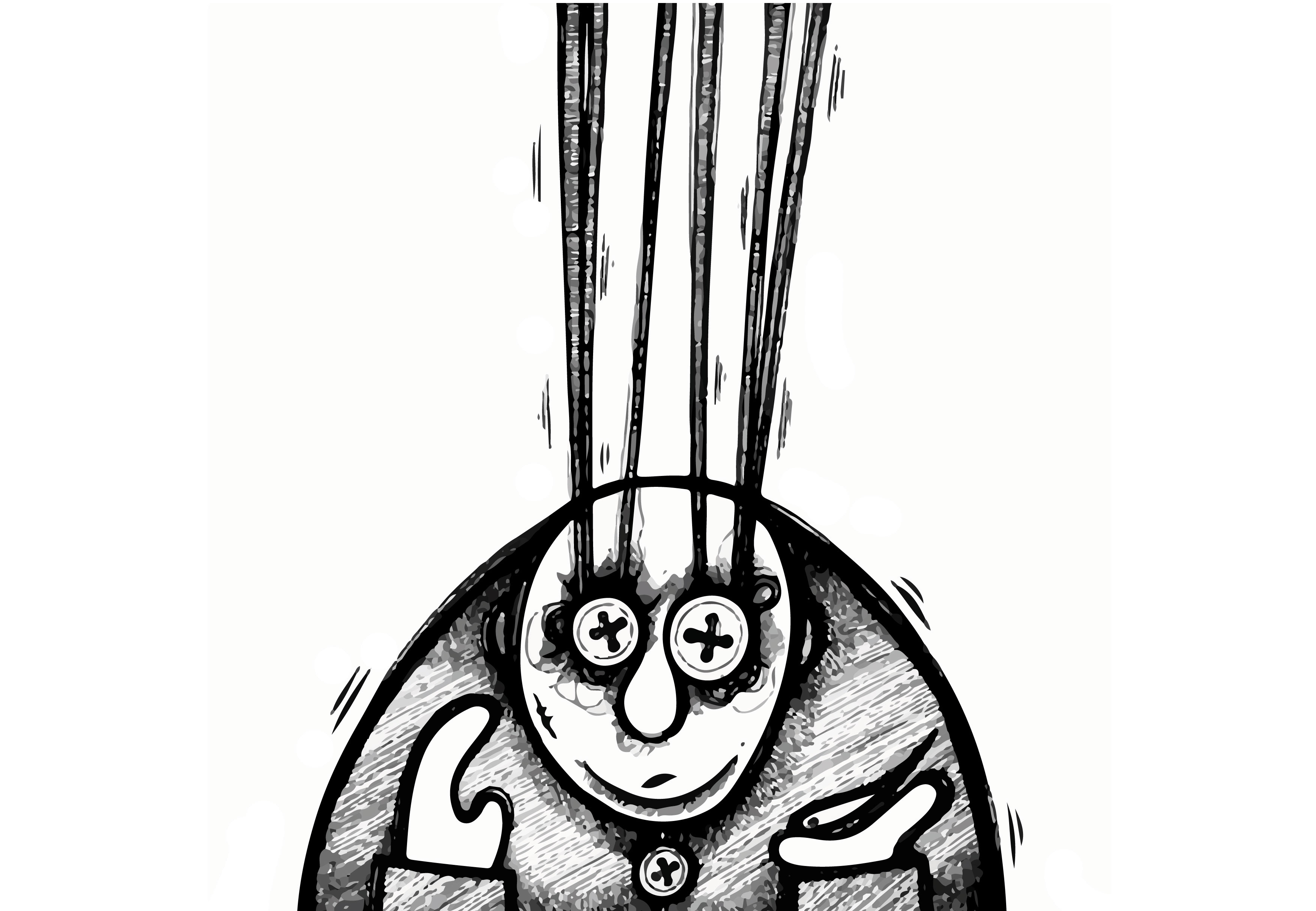ЎІўДўГўИўЕўКўГЎ≥ ўБўК ЎІўДЎѓўИўД ЎІўДЎєЎ±Ў®ўКЎ© ЎІўДўКўИўЕ
Ўѓ. ўДўКўЖЎІ ЎІЎ±ўЕЎЇЎІЎ±Ўѓ ўЕЎ±ўЗЎђ
Ў™ЎіЎ±ўКўЖ ЎІўДЎ£ўИўД ў°ўІЎМ ўҐў†ў°ў¶
ЎєЎІЎѓ ўБўЖ ЎІўДўГўИўЕўКўГЎ≥ (ЎІўДЎіЎ±ЎІЎ¶ЎЈ ЎІўДўЕЎµўИЎ±Ў©) ўИЎІўДЎ±Ў≥ўИўЕ ЎІўДўГЎІЎ±ўКўГЎІЎ™ўИЎ±ўКЎ© ЎІўДЎ≥ўКЎІЎ≥ўКЎ© ўБўК ЎІўДЎєЎІўДўЕ ЎІўДЎєЎ±Ў®ўК ўЕўЖ ЎѓўИўЖ Ў£ўК ЎіўГ ЎІўДўКўИўЕЎМ ЎІўДўЙ ўЕЎ≥Ў™ўИўЙ ЎІўДЎ•Ў®ЎѓЎІЎє ЎІўДЎєЎІўДўК ЎІўДЎ∞ўК ўГЎІўЖ ўВЎѓ ўБўВЎѓўЗ ўЕўЖЎ∞ ЎІўДЎ≥Ў®ЎєўКўЖўКЎІЎ™ ўБўК ЎІўДўВЎ±ўЖ ЎІўДўЕўЖЎµЎ±ўЕ. ўИўДўГўЖ ЎІўДЎ™Ў≠ЎѓўК ЎІўДЎ£Ў®Ў±Ў≤ ЎІўДЎҐўЖ ўЗўИ Ў•ўКЎђЎІЎѓ ЎІўДЎ™ўИЎІЎ≤ўЖ Ў®ўКўЖ ЎІўДЎ•ўЖЎ™ЎІЎђ ўИЎІўДЎ™ўИЎ≤ўКЎєЎМ Ў£ўК Ў®ЎєЎ®ЎІЎ±Ў© Ў£ЎЃЎ±ўЙЎМ ўКўГўЕўЖ ЎІўДЎ™Ў≠ЎѓўК ўБўК ЎІўДЎєЎЂўИЎ± ЎєўДўЙ ЎІўДўВЎ±ўСЎІЎ° ЎІўДўЕўЖЎІЎ≥Ў®ўКўЖ ўДўЗЎ∞ЎІ ЎІўДЎІўЖЎ™ЎІЎђ ЎІўДЎІЎ®ЎѓЎІЎєўК ЎІўДЎђЎѓўКЎѓЎМ ўИЎ•ўКЎђЎІЎѓ ЎІўДўЕўЖЎµЎ© ЎІўДЎ£ўБЎґўД ўДўЗЎ∞ЎІ ЎІўДўБўЖ.
ЎІЎѓЎ±ЎІўГЎІ ўЕўЖўЗўЕ ўДЎ∞ўДўГЎМ ўВЎІўЕ ЎІўДЎєЎѓўКЎѓ ўЕўЖ Ў±Ў≥ЎІўЕўК ЎІўДўГЎІЎ±ўКўГЎІЎ™ўИЎ± ўИЎІўДЎ±Ў≥ЎІўЕўКўЖ ЎІўДЎ™ЎµўИўКЎ±ўКўКўЖ ЎІўДЎєЎ±Ў® Ў®ЎІўДЎєўЕўД ўЕЎєЎІ ўДЎЃўДўВ ЎІЎЈЎІЎ± Ў™ЎєЎІўИўЖўК Ў≠ўКўИўК ўДўЗўЕ. ўДўГўЖ ЎІўДЎђўЕўЗўИЎ± ЎІўДЎєЎ±Ў®ўК ўЕЎє Ў∞ўДўГ ўДўЕ ўКЎ™Ў≥ўЖўСўЙ ўДўЗ ЎІўДЎІЎґЎЈўДЎІЎє ЎєўДўЙ Ў£ЎєўЕЎІўДўЗўЕ Ў®ЎІўДЎіўГўД ЎІўДўЕЎ±ЎЇўИЎ® Ў®ўЗЎМ ўЖЎЄЎ±ЎІ ўДўЕЎ≥Ў™ўИўКЎІЎ™ ЎІўДЎ™ўИЎ≤ўКЎє ЎІўДўЕЎ≠ЎѓўИЎѓЎ© ўИЎІўДЎєЎѓЎѓ ЎІўДўЕЎ™ўЖЎІўВЎµ ўДўДўВЎ±ЎІЎ° Ў®ЎіўГўД ЎєЎІўЕ.
ўБўК Ў≥Ў™ўКўЖўКЎІЎ™ ўИЎ≥Ў®ЎєўКўЖўКЎІЎ™ ЎІўДўВЎ±ўЖ ЎІўДўЕЎІЎґўКЎМ ЎІЎ≤ЎѓўЗЎ±Ў™ ЎІўДЎіЎ±ЎІЎ¶ЎЈ ЎІўДўЕЎµўИЎ±Ў© ЎІўДўЕўИўСЎђўЗЎ© ўДўДЎЈўБўД ЎІўДЎєЎ±Ў®ўКЎМ ўИЎ∞ўДўГ Ў®ўБЎґўД ўЖўЕўИ ўЕЎђўДЎІЎ™ ЎІўДЎ£ЎЈўБЎІўД ЎІўДЎ™ўК Ў£ўЖЎ™ЎђЎ™ўЗЎІ ўИЎ±ЎєЎ™ўЗЎІ Ў≠ўГўИўЕЎІЎ™ Ў®ЎєЎґ ЎІўДЎѓўИўД ЎІўДЎєЎ±Ў®ўКЎ©ЎМ ўЕЎЂўД ЎІўДЎђЎ≤ЎІЎ¶Ў± ўИўЕЎµЎ± ўИўДЎ®ўЖЎІўЖ ўИЎ≥ўИЎ±ўКЎІ ўИЎІўДЎєЎ±ЎІўВ. ўГўЕЎІ ЎІўЖЎ™ЎіЎ±Ў™ ЎІўДЎ™Ў±ЎђўЕЎІЎ™ ЎІўДЎєЎ±Ў®ўКЎ© ўДўДўВЎµЎµ ЎІўДўЕЎµўИЎ±Ў© ЎІўДЎ£ўЕЎ±ўКўГўКЎ© ўИЎІўДўБЎ±ўЖЎ≥ўКЎ©-ЎІўДЎ®ўДЎђўКўГўКЎ© ЎђўЖЎ®ЎІ Ў•ўДўЙ ЎђўЖЎ® ўЕЎє ЎІўДўЕЎђўДЎІЎ™ ЎІўДЎєЎ±Ў®ўКЎ© ЎІўДўЕЎ≥Ў™ўВўДЎ©.
Ў£ўЕЎІ Ў®ЎІўДўЖЎ≥Ў®Ў© ўДЎ±Ў≥ўИўЕ ЎІўДўГЎІЎ±ўКўГЎІЎ™ўИЎ±ЎМ ўИЎ®ЎЃЎІЎµЎ© ЎІўДўГЎІЎ±ўКўГЎІЎ™ўИЎ± ЎІўДЎ≥ўКЎІЎ≥ўКЎМ ўБЎІўЖ ўЗЎ∞ЎІ ЎІўДўБўЖ ўГЎІўЖ ЎѓўИўЕЎІ ўЕЎ™ЎЈўИЎ±ЎІ ЎђЎѓЎІ ўБўК ЎІўДЎ®ўДЎѓЎІўЖ ЎІўДЎєЎ±Ў®ўКЎ©ЎМ ўЕЎє ўБўЖЎІўЖўКўЖ ўЕЎЂўД ўЖЎІЎђўК ЎІўДЎєўДўК ўИЎ®ўЗЎђЎ™ ЎєЎЂўЕЎІўЖЎМ ЎєўДўЙ Ў≥Ў®ўКўД ЎІўДўЕЎЂЎІўД ўДЎІ ЎІўДЎ≠ЎµЎ±.
ЎІўДўКўИўЕЎМ ўБўВЎѓ ўЕЎ±ўС ўГўДўС ўЕўЖ ЎІўДўБўЖЎІўЖўКўЖ ўИўИЎ≥ЎІЎ¶ўД ЎІўДЎ•ўЖЎ™ЎІЎђ Ў®ЎєЎѓўСЎ© Ў™ЎЇўКўКЎ±ЎІЎ™. ўБЎІўДўЕЎ≠Ў™ўИўЙ Ў£ЎґЎ≠ўЙ ўЕЎ™ўЖўИЎєЎІ ЎєўДўЙ ўЖЎ≠ўИ ўЕЎ™Ў≤ЎІўКЎѓ. ўЕЎЂўДЎІ ўКўВўИўЕ ЎІўДЎєЎѓўКЎѓ ўЕўЖ ЎІўДўБўЖЎІўЖўКўЖ ўБўК ўГЎЂўКЎ± ўЕўЖ ЎІўДЎ£Ў≠ўКЎІўЖ Ў®ўИЎґЎє ЎІўДўЖЎ≥ЎІЎ° ўГЎіЎЃЎµўКЎІЎ™ ўБўК Ў®ўЖЎІЎ° Ў≥Ў±ЎѓўКЎІЎ™ўЗўЕ ЎІўДўЕЎµўИўСЎ±Ў©ЎМ ўГўЕЎІ ўКўВўИўЕўИўЖ Ў®ЎІўДЎЃЎ±ўИЎђ ўБўК ўЕЎ≠ЎЈўСЎІЎ™ ЎєЎѓўСЎ© Ў®ўЕўИЎґўИЎєЎІЎ™ўЗўЕ ўЕўЖ ЎІўДЎ≠ЎѓўИЎѓ ЎІўДЎґўКўСўВЎ© ўДўЕЎІ ўКЎ™ЎєЎІЎ±ўБ ЎєўДўКўЗ ЎєўДўЙ Ў£ўЖўЗ ўЕЎђЎІўД Ў≥ўКЎІЎ≥ўК Ў®ЎІўЕЎ™ўКЎІЎ≤. ўГўЕЎІ Ў£ўЖўЗ Ў®ЎІўЖЎ™ЎіЎІЎ± Ў®Ў±ЎІўЕЎђ ЎІўДЎ™ЎµўЕўКўЕ ЎІўДЎђЎ±ЎІўБўКўГўК ЎІўДЎђЎѓўКЎѓЎ© ўБўК ЎђўЕўКЎє Ў£ўЖЎ≠ЎІЎ° ЎІўДўЕўЖЎЈўВЎ©ЎМ ЎЄўЗЎ± ЎђўКўД ЎђЎѓўКЎѓ ўЕўЖ ЎІўДўБўЖЎІўЖўКўЖ ЎІўДЎ™ЎµўИўКЎ±ўКўКўЖ ЎІўДЎ∞ўКўЖ ўДЎѓўКўЗўЕ Ў•ўДўЕЎІўЕ Ў®ўГўСўД ўЕўЖ ЎІўДЎ™ЎµўЕўКўЕ ЎІўДЎђЎ±ЎІўБўКўГўК ўИЎІўДўГўИўЕўКўГЎ≥.
Ў®ЎІўДЎ•ЎґЎІўБЎ© Ў•ўДўЙ Ў∞ўДўГЎМ ўБЎ•ўЖ ЎєЎѓЎѓ ўДЎІ ўКЎ≥Ў™ўЗЎІўЖ Ў®ўЗ ўЕўЖ Ў±Ў≥ЎІўЕўК ЎІўДўГўИўЕўКўГЎ≥ ўКўВўИўЕўИўЖ Ў®ЎІўДўГЎ™ЎІЎ®Ў© Ў®ўДЎЇЎІЎ™ ЎЇўКЎ± ЎІўДўДЎЇЎ© ЎІўДЎєЎ±Ў®ўКЎ©ЎМ ўЕўЕЎІ ўКЎ™ўКЎ≠ ўДўЗўЕ ўБЎ±ЎµЎ© ЎІўДЎ™ЎєЎІўИўЖ ўЕЎє ўБўЖЎІўЖўКўЖ ЎєЎІўДўЕўКўКўЖ.
ўДўВЎѓ Ў™ўИўСЎ≥ЎєЎ™ ўВЎІЎєЎѓЎ© ўВЎ±ўСЎІЎ° ЎІўДўГўИўЕўКўГЎ≥ ўБўК ЎђўЕўКЎє Ў£ўЖЎ≠ЎІЎ° ЎІўДЎєЎІўДўЕЎМ ўИўЗўК ЎІўДўКўИўЕ Ў£ўВўИўЙ ўЕўЖ Ў£ўК ўИўВЎ™ ўЕЎґўЙ. ўБўБўК Ў®ЎєЎґ ЎІўДЎ®ўДЎѓЎІўЖЎМ Ў™Ў≥Ў™ЎЃЎѓўЕ ЎІўДўГўИўЕўКўГЎ≥ ўГўЕўИЎІЎѓ ЎІўДЎѓЎ±ЎІЎ≥ўКЎ©ЎМ Ў≥ўИЎІЎ° ўГЎІўЖ Ў∞ўДўГ ўБўК ўГЎ™Ў® ЎІўДЎ™ЎІЎ±ўКЎЃ Ў£ўИ ўГЎ™Ў® ЎєўДўЕ ЎІўДЎІЎђЎ™ўЕЎІЎє ЎІўДўЕЎѓЎ±Ў≥ўКЎ©. ўГЎЂўКЎ± ўЕўЖЎІ ўБўК ўДЎ®ўЖЎІўЖ ўИЎ®ўДЎѓЎІўЖ Ў£ЎЃЎ±ўЙ ўБўК ЎІўДЎіЎ±ўВ ЎІўДЎ£ўИЎ≥ЎЈ ўГЎІўЖўИЎІ ўВЎѓ ўВЎІўЕўИЎІ Ў®ўВЎ±ЎІЎ°Ў© ЎІўДўГўИўЕўКўГЎ≥ ўБўК Ў≥ўЖ ЎІўДЎЈўБўИўДЎ© ўИЎІўДўКўИўЕЎМ ЎІўДЎєЎѓўКЎѓ ўЕўЖЎІ ўКЎ±ўКЎѓ ўВЎ±ЎІЎ°Ў© ЎІўДўЕЎ≤ўКЎѓ ўЕўЖўЗЎІ. ўБўЕўЖ ЎѓўИўЖ ЎіўГЎМ ўЗўЖЎІўГ Ў±Ў≥ўСЎІўЕўИўЖ ўИўГЎ™ЎІЎ®ЎІўС ЎђЎѓўСўКўИўЖ ўБўК ўЕЎђЎІўД ЎІўДЎіЎ±ЎІЎ¶ЎЈ ЎІўДўЕЎµўИЎ±Ў© ўИЎІўДЎ∞ўКўЖ ўКЎЂўКЎ±ўИўЖ ЎІўЗЎ™ўЕЎІўЕўЖЎІ ўГЎ±ЎІЎіЎѓўКўЖ.
ўЕўЖ ўЕўЖўСЎІ ўДЎІ ўКЎ≠Ў® ЎІўДЎµўИЎ±ЎЯ ўБўЖЎ≠ўЖ ўЖЎ∞ўЗЎ® Ў•ўДўЙ ЎІўДўЖўИўЕ ўДўКўДЎІ ўЕЎє Ў•ўКўЖЎ≥Ў™ЎІЎђЎ±ЎІўЕ ўИўЖЎ≥Ў™ўКўВЎЄ ЎµЎ®ЎІЎ≠ЎІ ўЕЎє ЎІўДўБўКЎ≥Ў®ўИўГ. ўДЎ∞ўДўГЎМ ўЖЎ±ЎЇЎ® Ў®ўВЎ±ЎІЎ°Ў© ўИЎ±Ў§ўКЎ© ЎєўИЎІўДўЕ ўЕЎµўИўСЎ±Ў© ЎђЎѓўКЎѓЎ© ЎєўЖ Ў£ўЖўБЎ≥ўЖЎІ ўДўЖЎ™ЎЃўКўД Ў£ўЖўБЎ≥ўЖЎІ ўИўГЎ£ўЖўЖЎІ ўЖЎєўКЎі ЎѓЎІЎЃўД ўЗЎ∞ўЗ ЎІўДўВЎµЎµ.
ўДўВЎѓ Ў™ЎЇўКЎ±Ў™ ўВўЖўИЎІЎ™ ЎІўДЎ™ўИЎ≤ўКЎє ўДЎ£ЎєўЕЎІўД ЎІўДўГўИўЕўКўГЎ≥ ЎІўДўЕЎЃЎ™ўДўБЎ©ЎМ ўИЎІўДЎҐўЖ Ў™ЎіўЕўД Ў±Ў≥ўИўЕ ЎІўДўГЎІЎ±ўКўГЎІЎ™ўИЎ± ўИЎІўДўЕЎђўДЎІЎ™ ЎІўДўЕЎµўИўСЎ±Ў© ўИЎІўДўЕЎђўДЎІЎ™ ЎІўДўБўЖўКЎ©ЎМ ўИЎІўДЎ±ўИЎІўКЎІЎ™ ЎІўДўЕЎµўИЎ±Ў© ўИЎІўДўГўИўЕўКўГЎ≥ ЎєўДўЙ ЎіЎ®ўГЎ© ЎІўДЎ•ўЖЎ™Ў±ўЖЎ™. ўГўЕЎІ Ў™ЎЇўКўСЎ±Ў™ ЎІўДЎЈЎ±ўКўВЎ© ЎІўДЎ™ўК ўЖўВўИўЕ ўЕўЖ ЎЃўДЎІўДўЗЎІ Ў®ЎіЎ±ЎІЎ° Ў£ўИ ўВЎ±ЎІЎ°Ў© ЎІўДўВЎµЎµ ЎІўДўЕЎµўИЎ±Ў© ўБўДўЕ Ў™ЎєЎѓ Ў™ўВЎ™ЎµЎ± ўЗЎ∞ўЗ ЎєўДўЙ Ў£ўВЎ≥ЎІўЕ ЎІўДўЕЎђўДЎІЎ™ ўБўК ЎІўДўЕўГЎ™Ў®ЎІЎ™. ўБўЖЎђЎѓ ЎІўДўКўИўЕ Ў£ЎєўЕЎІўД ЎІўДўГўИўЕўКўГЎ≥ ўБўК ЎІўДўЕўГЎ™Ў®ЎІЎ™ ўИЎІўДўЕўВЎІўЗўК ўИЎІўДўБЎєЎІўДўКЎІЎ™ ЎІўДўЕЎЃЎ™ўДўБЎ©ЎМ ўЕўЖ ЎІЎђЎ™ўЕЎІЎєЎІЎ™ Ў≠ўВўИўВ ЎІўДЎ•ўЖЎ≥ЎІўЖЎМ ЎІўДўЙ ЎІўДўЕЎєЎІЎ±Ўґ ЎІўДўБўЖўКЎ© ўИЎІўДўЕўЗЎ±ЎђЎІўЖЎІЎ™.
ўБўК ЎґўИЎ° ўЗЎ∞ўЗ ЎІўДЎ™ЎЇўКўКЎ±ЎІЎ™ ўБўК ЎєЎІўДўЕ ЎІўДўГўИўЕўКўГЎ≥ЎМ ўКўЕўГўЖ ўДўДўЕЎ±Ў° Ў£ўЖ ўКЎ™ЎєўДўЕ ўЕўЖ ЎІўДЎ£Ў≥ўИЎІўВ ЎІўДўЕўЕЎІЎЂўДЎ© ўИЎІўДўЕЎєЎІЎµЎ±Ў© ЎІўДЎ£ЎЃЎ±ўЙ ўБўК ЎІўДЎєЎІўДўЕЎМ ЎєўДўЙ Ў≥Ў®ўКўД ЎІўДўЕЎЂЎІўД ўБўК Ў®ЎІЎ±ўКЎ≥ Ў£ўИ Ў±ўИўЕЎІ Ў£ўИ Ў®Ў±ўДўКўЖ. ўБўЕЎІ ЎІўДЎ∞ўК ўКЎ™ЎєўКўСўЖ ўБЎєўДўЗ ўДЎ•ЎѓЎІўЕЎ© ўИЎ™ЎЈўИўКЎ± Ў≥ўИўВ ЎІўДўГўИўЕўКўГЎ≥ ўИўЕЎІ ўЗўК ЎІўДЎІЎ≥Ў™Ў±ЎІЎ™ўКЎђўКЎІЎ™ ЎІўДўЕЎ™Ў®ўСЎєЎ© ўБўК ЎІўДЎ®ўДЎѓЎІўЖ ЎІўДЎ£ЎЃЎ±ўЙЎЯ ўБўК ЎІўДЎ≠ўВўКўВЎ©ЎМ Ў™ўВўИўЕ ЎІўДўЕЎѓЎІЎ±Ў≥ ўИЎІўДЎђЎІўЕЎєЎІЎ™ ўИЎѓўИЎ± ЎІўДўЖЎіЎ± ўИЎІўДўЕўГЎ™Ў®ЎІЎ™ ўИўЕЎ≠ўДЎІЎ™ Ў®ўКЎє ЎІўДўГЎ™Ў® ўИЎІўДЎЇЎІўДўКЎ±ўКЎІЎ™ Ў®Ў®Ў∞ўД ЎђўЗўИЎѓЎІ ўГЎ®ўКЎ±Ў© ўДўЕЎ≥ЎІЎєЎѓЎ© ўБўЖ ЎІўДўГўИўЕўКўГЎ≥ ўИЎІўЖЎ™ЎІЎђЎІЎ™ўЗ ЎєўДўЙ Ў£ўЖ Ў™Ў≤ЎѓўЗЎ±ЎМ Ў®ўВЎѓЎ± ўЕЎІ Ў™Ў®Ў∞ўДўЗ ЎІўДЎђўЕЎєўКЎІЎ™ ЎІўДўЕЎ≠ўДўКЎ© ўБўК ўЗЎ∞ЎІ ЎІўДўЕЎђЎІўД ўЕЎЂўД ¬ЂЎЈЎі ўБЎі¬ї.
ўКўВўИўЕ ўЗЎ∞ЎІ ЎІўДЎєЎѓЎѓ ўЕўЖ ¬ЂЎЈЎі ўБЎі¬ї Ў®ЎІўДўИўВўИўБ ўГЎіЎІўЗЎѓ ЎєўДўЙ Ў£ЎєўЕЎІўД Ў£ўИўДЎ¶ўГ ЎІўДўБўЖЎІўЖўКўЖ ЎІўДЎ∞ўКўЖ ўГЎ±Ў≥ўИЎІ ўБўЖўЗўЕ ўДўДЎЇЎ© ЎІўДЎ±Ў≥ўИўЕЎІЎ™ЎМ Ў≥ўИЎІЎ° ўГЎІўЖўИЎІ Ў±Ў≥ЎІўЕўК ЎІўДўГЎІЎ±ўКўГЎІЎ™ўИЎ± Ў£ўИ ўБўЖЎІўЖўК ЎІўДўГўИўЕўКўГЎ≥. ўКЎђЎ® ЎІўДЎ™ўЖўИўКўЗ ўЗўЖЎІ Ў®Ў£ўЖўЗ ўБўК ЎЃЎґўЕ ЎІўДЎ£ўИЎґЎІЎє ўИЎІўДЎµЎ±ЎІЎєЎІЎ™ ЎІўДЎµЎєЎ®Ў© ўБўК ЎІўДЎєЎѓўКЎѓ ўЕўЖ ЎІўДЎѓўИўД ЎІўДЎєЎ±Ў®ўКЎ© ЎІўДўКўИўЕЎМ ўКЎЄўЗЎ± ЎђўИ ўЕўЖ ЎІўДўВўЕЎє ЎґЎѓ ўИЎђўЗЎІЎ™ ЎІўДўЖЎЄЎ± ЎІўДЎєўДўЕЎІўЖўКЎ© Ў£ўИ ЎІўДўЕЎѓўЖўКЎ©ЎМ ўЕўЕЎІ ўКЎєЎ±Ўґ ЎІўДЎєЎѓўКЎѓ ўЕўЖ ЎІўДЎ±Ў≥ЎІўЕўКўЖ ўИЎІўДўБўЖЎІўЖўКўЖ ўДўДЎЃЎЈЎ±ЎМ ўЕЎЂўД ЎєўДўК ўБЎ±Ў≤ЎІЎ™ЎМ Ў£ўГЎ±ўЕ Ў±Ў≥ўДЎІўЖ ўИЎІўДўЕЎ≠Ў±Ў±ўКўЖ ўБўК ўЕЎђўДЎ© ЎІўДЎ≥ўЕўЖЎѓўД.
ўГўДўЗўСўЕ ЎµўИўСЎ±ўИЎІ ЎІўДЎ≠ўКЎІЎ© ўГўЕЎІ ўЗўК ўЗўЖЎІ: Ў£Ў≠ўКЎІўЖЎІ ўЕЎє ЎіўКЎ° ўЕўЖ ЎІўДўБўГЎІўЗЎ©ўА ўИЎ£Ў≠ўКЎІўЖЎІ Ў£ЎЃЎ±ўЙ ўЕЎє Ў®ЎєЎґ ўЕўЖ ЎІўДўЖЎѓўЕ Ў£ўИ ЎІўДЎЇЎґЎ® ўИўДўГўЖ ЎѓўИўЕЎІ ўЕўЖ ўЕўЖЎЈўДўВ ўЕЎ≠Ў®ўС.
Comics in Arab Countries Today
Lena Irmgard Merhej (Phd)
October 17, 2016
There is no doubt that the lost art of comics and political cartoons has again reached new creative heights in the Arab world, after fading from prominence after the 1970s. But now the challenge is finding the balance between production and distribution, in other words, finding the right consumers for this new creative output, and finding the right home for such art.
In response, Arab cartoonists and illustrators are working together to create an energetic community. However, the Arab market is yet to be fully exposed to their work, due to limited distribution levels and the diminishing number of readers overall.
Arab childrenвАЩs comics thrived in the 1960s and 70s, thanks to the growth of specialist childrenвАЩs magazines commissioned by various governments in the Arab League, such as Algeria, Egypt, Lebanon, Syria and Iraq.
Traditionally, Arabic translations of American and Franco-Belgian cartoons were found alongside independent magazines.
Editorial cartoons, in particular political caricature, have always been very developed in Arab countries, with artists such as Naji El Ali and Bahgat Othman, to name just a few. But today, the artists and the means of production have changed.
The content today has become increasingly diverse, with artists more often including women in their graphic narratives, and often stepping outside of the strictly political arena. With new graphic design programs blossoming across the region, a new generation of visual artists have been born who are both sensitive to graphics and knowledgeable about comics.
In addition, comic artists are writing not only in Arabic, but in other languages too, and are able to collaborate and converse with international artists.
Across the globe, the readership of comics is stronger than ever before. In some countries, comics are being used as school material, whether as history or sociology textbooks.
In Lebanon and other countries in the Middle East, many of us read comics when we were kids. And today, we want to read more. We know that there are serious comic artists who still interest us as adults, and we love the images.
We go to sleep at night with Instagram and we wake up with Facebook. We want to read and see new graphic worlds being born about ourselves and imagine ourselves living in these stories. Readership is no longer restricted to children, and it now includes teenagers and adults.
Last but not least, the distribution channels surrounding comic media have changed and now include editorial cartoons, graphic and art magazines, graphic novels and web comics. Also, the way we buy or read comics is no longer restricted to magazine stands; we now find them in bookstores, at human rights events, in art galleries, festivals and in cafes.
With all these changes in the world of comics, one can learn from the markets of other comparable contemporary and global comic movements, for example n Paris, Rome or Berlin. What does it take to sustain a comics market and what are the strategies used in other countries? Schools, universities, publishers, libraries, bookstores and art venues, as much as local organizations such as Tosh Fesh, are making great efforts for comics and cartooning to thrive.
This volume acts as a witness to the works of artists who dedicated their art to the language of graphics. Some of them are cartoonists and some are comic artists. However, in the midst of the difficult situations and conflicts in many Arab countries today, secular or civic views are being oppressed, endangering many cartoonists and comic artists, such as Ali Ferzat, Akram Raslan and the Samandal editors.
All have depicted life as it is here, sometimes with humor, sometimes with remorse or aggression, but always from a place of love.
Source



